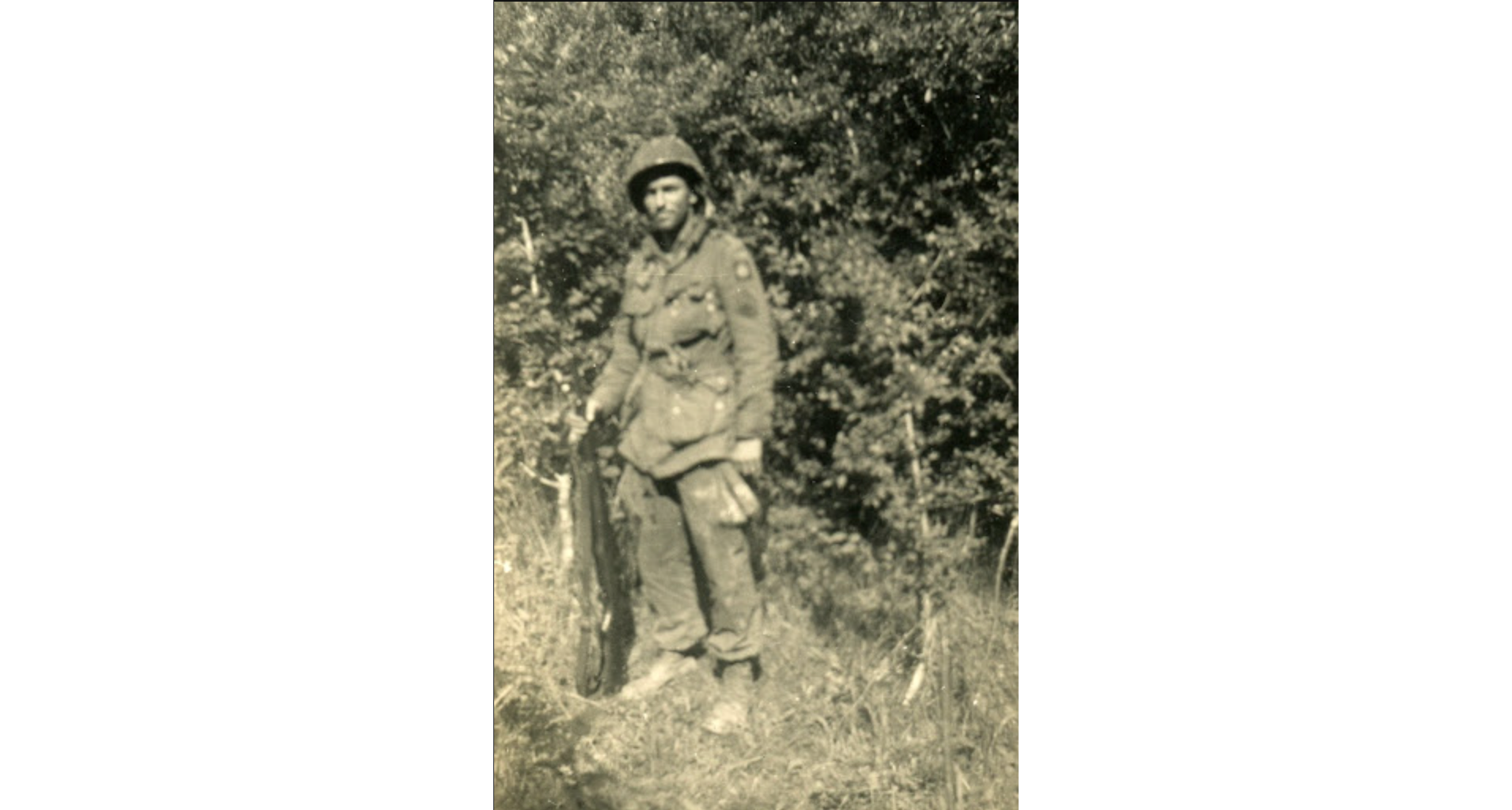
Sgt. Bill Owens, confronting death everywhere, had what it took to lead men at La Fiere Bridge after being told there was “no better place to die.”
Lost to history is the story of Sgt. Bill Owens, squad leader, 1st Platoon, 1st Battalion, 505th Parachute Infantry Regiment, 82nd Airborne Division, 0630 6 June, 1944, La Fiere Bridge, Normandy, France.
D-Day.
Positioned next to the crucial bridge, the paratroopers had to hold a tenuous perimeter. Owens bore the brunt of repeated German attacks. Between then and 2000, Owens became the de facto company commander after Lt. John Dolan had filled the void left when the first two battalion commanders in the operation were killed.
With three machine guns stretched across a thin line, Owens kept the survivors of fierce artillery and mortar fire fighting. Casualties mounted, and it became impossible to remove the wounded and the dead. Owens crawled the line. He ministered to the wounded. He propped the dead into their foxholes. He redistributed ammunition and repaired machine guns. His voice calmed the men and focused them on their desperate defense.
During the course of the day, three German tanks assaulted the position. All were taken out by two U.S. bazooka teams at distances less than 20 meters. All four team members were awarded the Distinguished Service Cross.
At around 2200, Owens heard the sound of German soldiers trying to recover the tanks. On his own volition, he low-crawled along the riverbank, hiding beneath a low hedge. He guessed at the Germans’ position, extracted a Gammon grenade and tossed it over the hedge. It exploded next to a tank and gave the enemy sufficient pause to cease any recovery attempts.
By 0600 on June 7, the Germans continued attacking, reducing the effective force of Americans from 140 to less than 30 stretched across 100 meters of treacherous ground. Owens’ platoon, once 45, was reduced to 12. He and his foxhole mate, Pvt. 1st Class Bob Murphy, were among the 12. German small arms and mortar fire rained on the exposed position. Any chance of medical evacuation or re-supply was eliminated.
Owens was on his own.
He moved from machine gun to machine gun, stepping in for the dead and wounded gunners. He would fire part of a belt and move to the next, repeating the action, to give the enemy an appearance of multiple gun teams. He propped up the wounded with weapons and kept them engaging. During the course of that day, Owens was wounded more than three times.
Finally, by 1500, he turned to Murphy and told him to low-crawl to Lt. Dolan, explain the situation, and ask for guidance. Murphy found Dolan and briefed him. Dolan wrote in a message pad and tore out the page. He gave it to Murphy. Scrawled were the words: “I know no better place to die.”
Murphy returned to Owens and handed him the note. Owens understood. “OK. We stay.”
The road and bridge were packed with dead Germans. At 1600, a German treaty team approached and requested a cease-fire. It was granted. During this time, Gen. James Gavin replaced the 1-505 with A, 1-507. Owens and the 12 surviving men went to the rear.
Owens’ Distinguished Service Cross award nomination by Gavin was lost, and he never received any recognition for his leadership and bravery at that key moment, which prevented German forces from confronting the Americans who had come ashore at Utah Beach and were securing Ste. Mere-Eglise, first town liberated on D-Day, in the initial stage of the Allied march to victory in Europe.
U.S. Army Europe and Africa Commanding Gen. Chris Donahue – when he was commanding general of the 82nd Airborne Division (2020-21) – recognized Owens’ lost place in history and revived it, leading to the sergeant’s induction into the 82nd Airborne Hall of Fame in 2022.
On June 5, 2025, Harrison Morales, the great-grandson of Sgt. Bill Owens, will be at La Fiere Memorial Park for a ceremony in which Gen. Donahue will present the Distinguished Service Cross posthumously to the World War II sergeant who understood that there was no better place to die 81 years ago.
American Legion National Commander James A. LaCoursiere Jr. is among the dignitaries scheduled to attend the long-overdue moment of recognition.
Retired Army Col. Keith Nightingale is a writer, historian and guide on walking tours of the battlefields of the Normandy invasion for active-duty military personnel.
- Honor & Remembrance

